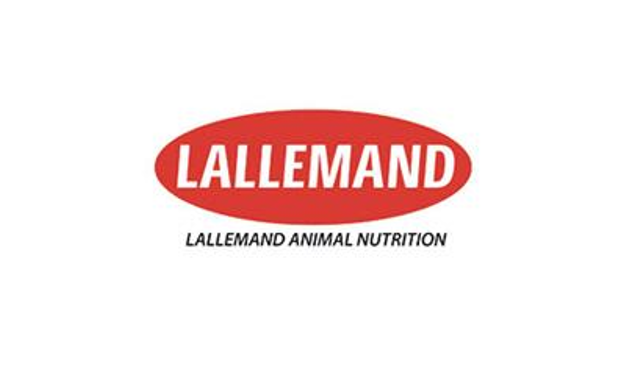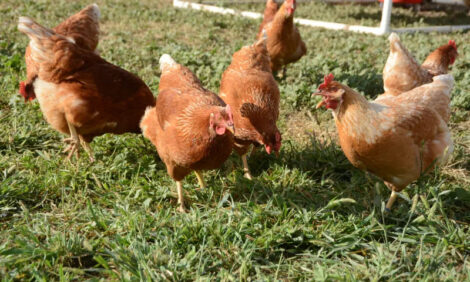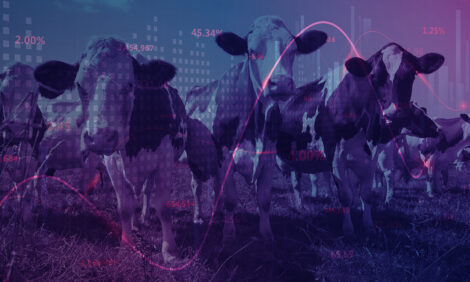



Redefining forage particle size for ruminants
Understand rumination process and importance of particle sizeThere has always been a strong association with long forage particles and an improvement in rumination and consequentially rumen health – but is this always the case?
To better understand the impact of particle size on cud chewing and rumen health, we need to fully understand rumination. Although rumination is often equated strictly with cud chewing it is actually a more complex process consisting of eating, cud chewing and recumbent cud chewing.
Eating and particle size
The dairy cow uses a grinding action with the molars to reduce the particle size of the forages – resulting in a shearing effect rather than cutting (Beauchemin, J. Dairy Sci. 101:4762–4784 2018). This is critical because the material needs to be reduced in particle size to be swallowed and then regurgitated as a bolus (cud).
Innovative research by Italian researchers (Schadt et al., 2012) demonstrated that the dairy cow, during eating, chews the forages just enough to reduce the forage particle size to be able to swallow the bolus – no more; no less. Longer or poorer quality material would increase eating time due to the increase difficulty in reducing particle size. Schadt’s research demonstrated that, regardless of the particle size of the ingested material, the particle size of the regurgitated bolus (cud) remained similar (see Table 1 and Photo 1).

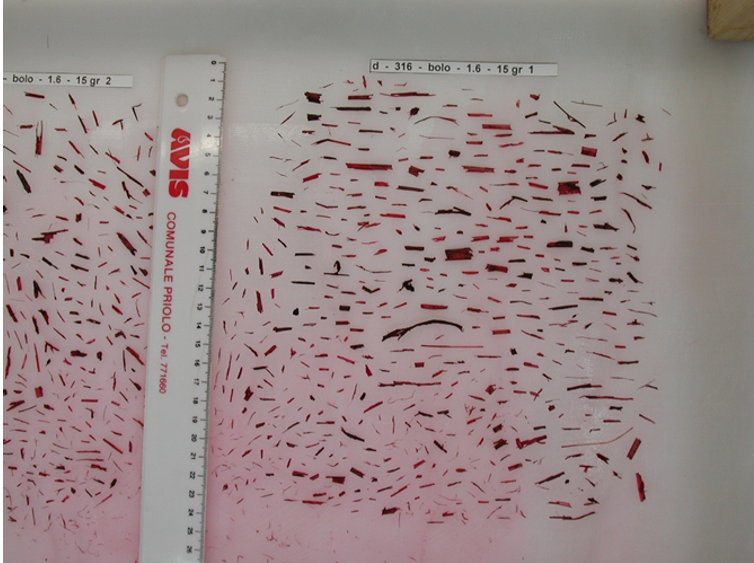
Recent research has shown an inverse relationship between time spent eating and resting. Long material, such as long dry hay, increases eating time but may reduce resting (lying) time – depending on the quality of the forage. Jiang et al., 2017 compared diets with increasing levels of forage – from 40% forage to 70% forage (Figure 1). As the forage content increased, peNDF (physically effective NDF) and uNDF240 (undigested NDF) levels also increased. Forages that are higher in NDF concentration or have longer particle size effectively lengthen the time required to consume feed. There was a significant increase in rumination time (eating and cud chewing) largely through an increase in eating time. This resulted in a decrease
in resting time that reflected the increase in total rumination time.
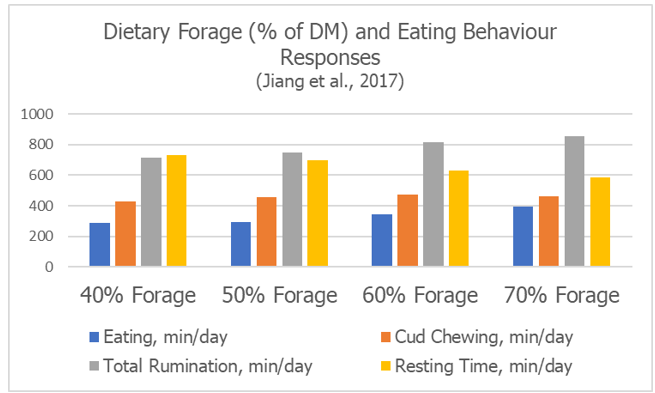
Why is this important?
Analysis from Rick Grant (Miner Institute, 2007) identified a relationship between resting time and milk production - each hour increase in resting time resulted in a gain of 1.7 kilograms of milk production.
Poor quality forages (higher uNDF240) may increase eating time due to the inherent difficulty in reducing particle size while high quality forages (lower uNDF240), due to the potential fragility of the plant, may break down more quickly – thus reducing eating time.
A study conducted at the Miner Institute examined the digestibility of the diet (uNDF240) and the physically effective fiber in the diet (peNDF and peuNDF240). The study examined four diets that contained the same amount of corn silage and chopped wheat straw. The particle size and uNDF240 content were adjusted using timothy hay at two chop lengths and some pelleted beet pulp to further reduce uNDF240. Table 2 shows that cows on the high digestibility/low effective fibre treatment had approximately 45 minutes less eating time but consumed over 2.26 kilograms more feed as compared to the low digestible/high effective fibre diet.
The animals on the low digestible diet (high uNDF240) with the longer timothy hay spent more time eating to reduce particle size and more time chewing due to the structure of the fibre. When the timothy dry hay was mechanically reduced in particle size, eating time decreased and milk production and DMI improved.
There appears to be an intersect between forage quality and particle size with potential for improved milk performance when lower quality forages are chopped finer. This study also demonstrated that the particle size of the bolus (cud) was very similar between diets regardless of the particle size of the forages.
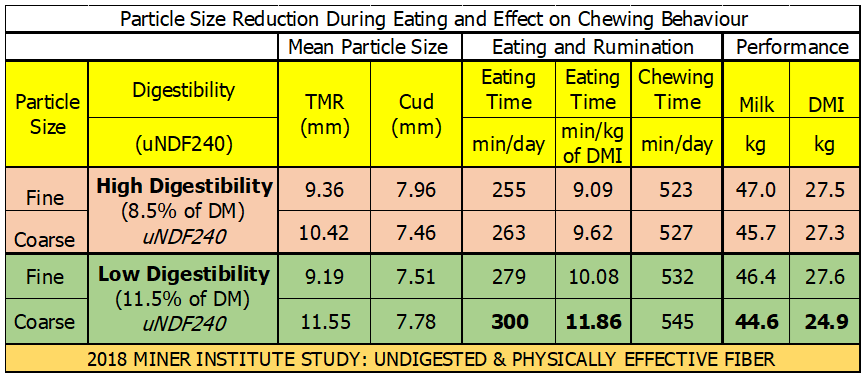
Cud chewing and particle size
Cud chewing is a critical component of the rumination process because it allows the dairy cow to access the nutrients locked within the forages. The majority of cud chewing is done during the resting period for the cow – when the cow is lying down.
As previously noted, the particle size of the forage is reduced through the eating process. Cud chewing abrades the fibre particles through a grinding action that is crucial for bacterial attachment.
Bacteria are opportunists and seek out the most rapidly available nutrient source – they quickly attach to the cut end of the forage particle. Ruminal bacteria attach to cells on the inside of the fibre and digest towards the outside until they are inhibited by a lignified wall. A thin lignified residual wall always remains even after extremely long rumen exposure times (Engels, 1989).
The rumen bacteria can easily attach to the cut end of the forage particles but have difficulty attaching to the outside wall, partially due to an impermeable waxy coating. This waxy coating is a defense mechanism for plant survivability through improved water retention and lower water loss. This is especially important during drought situations but also increases with maturity. Fungi, another key group within the rumen microbiota, have the ability to penetrate the outside wall of the plant and start the digestion process. This degradation of the outside plant wall structure through fungal digestion will allow for adhesion of primary bacterial colonizers - but this is a slow process. Cud chewing will quickly improve attachment by abrading the fiber and allowing the bacteria to enter the plant cells.
Increasing particle size of the diet seems to have less of an impact on cud chewing time but more of an impact on eating time. Beauchemin (Journal of Dairy Science Vol. 101 No. 6, 2018) reported that “increasing particle size of silage increased eating time (minutes per day and minutes per kilogram of DM) of dairy cows in many studies but not all”.
Decreasing particle size of the diet may have more of an impact on cud chewing than increasing particle size. The regurgitation of the bolus (cud) occurs as a result of a contraction of the reticulum. Small particle size may not illicit the tactile response in the reticulum to contract and regurgitate the cud. Small particle size may also decrease cud chewing by increasing passage rate of the material and subsequent exit from the rumen; leading to reduced ruminal fibre digestion. Fibre that exits the rumen “untouched” is primarily lost to further digestion in the hind-gut and will eventually pass into the manure.
Recumbent Cud Chewing
Research would indicate that approximately 80% or more of the cow’s ruminating behavior occurs while she is lying down or sternally recumbent. Any management practice that reduces lying time (such as over-crowding, poor stall design, poor hoof health) will also reduce rumination. Cows that accomplish more ruminating in stalls and lying down have higher rumen pH, consume higher dry matter intake (DMI) and produce milk with greater fat and protein content.
Practical recommendations for particle (TLC) size of forages
Applying the “Goldilocks’ principle”
The term Goldilocks’ diet is often used when referring to the high straw controlled-energy diet for the dry cow. The attribute of this program is that it is incorporating just the right amount of energy – not too much and not too little.
The Goldilocks principle can also apply to length of cut at harvest or particle size – not too short and not too long but just right for optimum performance.
Particles that are too long can potentially lead to an increase in eating time; which could lead to a reduction in resting time. As discussed earlier, reduced resting time has been associated with reduced milk production. The compelling issue with long particle size is the increased risk of sorting behaviour that discriminates against the longer forage components (Leonardi and Armentano, 2003).
Sorting against long particles can lead to rumen health concerns such as SARA (sub-acute ruminal acidosis). This can be exaggerated with diets that are high in starch and low in NDF or there is competition at the bunk due to poor feeding management or over-crowding.
Particles that are too short may lead to reduced rumen motility, increased incidence of SARA and high passage rate of the forage particles. Post-ruminal fibre digestion (hind-gut) is negligible – this represents a lost opportunity for deriving nutrients from fibre in the rumen. Retaining the forage particles in the rumen environment will improve forage digestibility.
Some practical recommendations:
The ultimate goal for forage particle size is to produce a homogenous TMR that reduces sorting behaviour. We need enough physical structure to ensure adequate rumination through cud chewing and rumen contractions but not chopped so fine that rumen dysfunction may occur. A general recommendation would be to harvest forages at a TLC broadly between 12 and 22 mm. This can vary due to species, maturity and dry matter differences of the crop being harvested. Figure 2 helps to illustrate some of the thought process when determining TLC at harvest:
You want to know more about the recommendation on particle size? What are the consequences about and consequences on production? What’s the adequate particle size? Click here

Our concept of adequate particle size has changed dramatically over the last few years. Reducing particle size to an appropriate level for optimum rumen function, cud chewing and cow performance is critical. Perhaps “long is wrong” but too short can also lead to health concerns. Applying the Goldilocks principle to particle size is a sound approach – not too long, not too short, but just right.
| References | ||||
|---|---|---|---|---|
| K A Beauchemin | ||||
| (2018) | Current perspectives on eating and rumination activity in dairy cows. J Dairy Sci. | |||
| F.G. Jiang, X.Y. Lin, Z.G. Yan, Z.Y. Hu, G.M. Liu, Y.D. Sun, X.W. Liu, Z.H. Wang | ||||
| (2017) | Effect of dietary roughage level on chewing activity, ruminal pH, and saliva secretion in lactating Holstein cows. J Dairy Sci. | |||
| I. Schadt, J.D. Ferguson, G. Azzaro, R. Petriglieri, M. Caccamo, P. Van Soest, G. Licitra | ||||
| (2012) | How do dairy cows chew? Particle size analysis of selected feeds with different particle length distributions and of respective ingested bolus particles. J Dairy Sci. | |||
| Engels, F.M | ||||
| (1989) | Some properties of cell wall layers determining ruminant digestion. Elsevier Applied Science, London. | p. 80-87, In A. Chesson and E.R. Orskov (eds.). Physico-Chemical Characterization of Plant Residues for Industrial and Feed Use. | ||
| Grant, R.J. | ||||
| (2007) | Cows under pressure: What have we learned about stocking density and natural cow behavior? | Section 4 in Proc. 47th Annual New England Dairy Feed Conference and Ruminant Nutrition and Health Conference. West Lebanon, NH and Syracuse, NY. | ||
| Rick Grant, Wyatt Smith, and Michael Miller, | ||||
| Relationships Between Fibre Digestibility and Particle Size for Lactating Dairy Cows, | William H. Miner Agricultural Research Institute, Chazy, NY |

